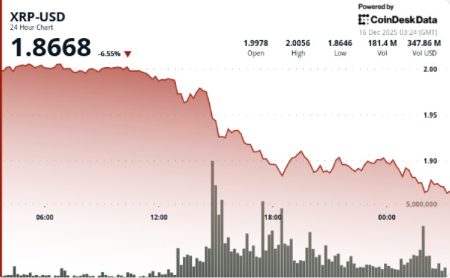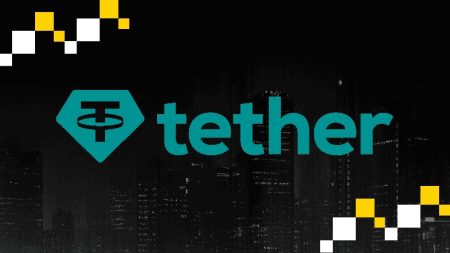How Tokenization Is Disrupting Hollywood’s Financing Model and Empowering Fans
The Creative Crisis in Tinseltown: How Traditional Financing Has Limited Original Content
The silver screen is facing a watershed moment. Hollywood’s creative well appears to be running dry as audiences increasingly voice their exhaustion with endless franchise sequels and reboots that dominate theater marquees. The statistics tell a compelling story: original screenplays at the U.S. box office have declined precipitously over the past four decades, reflecting a fundamental shift in how films are conceived, financed, and produced. Meanwhile, digital platforms like YouTube have surpassed even Disney to become the world’s largest content distributor, completely reshaping audience expectations and consumption habits. As generative AI tools like Sora 2 emerge on the horizon with the promise of democratizing filmmaking capabilities, one critical aspect remains firmly rooted in the past: the financing mechanisms that determine which stories make it to production.
This financing bottleneck lies at the heart of Hollywood’s creativity crisis. For generations, filmmakers seeking capital have faced a restrictive binary choice: either court wealthy “patrons of the arts” willing to take financial risks on unproven concepts, or sign restrictive deals with studios that often demand significant creative control and ownership of intellectual property. These limited pathways have created an exclusive ecosystem where small circles of industry insiders and wealthy benefactors effectively determine which voices are heard and which stories reach audiences. When visionaries like David Lynch emerge or cult classics like “Napoleon Dynamite” break through, it’s almost always because they navigated this closed system successfully. Meanwhile, the vast majority of Americans—more than 99% who don’t meet Securities and Exchange Commission (SEC) “accreditation” standards—have been legally prohibited from investing in most private ventures, including film projects, regardless of their passion or cultural insights.
The Evolution of Film Financing: From NFT Experiments to Regulated Tokenization
The landscape began shifting a few years ago when blockchain enthusiasts attempted to revolutionize film financing under the banner of “Web3 Film.” These early efforts, while visionary in concept, often missed the mark in execution. Projects experimented with fragmenting films into NFT frames, developed complex tokenomics systems, and frequently operated in regulatory gray areas. The results were predictably problematic, as exemplified by “Stoner Cats,” Ashton Kutcher’s NFT-funded animated project that later faced SEC scrutiny for potentially selling unregistered securities to unaccredited investors. These pioneering but flawed attempts revealed both the appetite for democratized film financing and the necessity for regulatory compliance.
Today’s tokenization model represents a more mature, legally sound approach to decentralizing film investment. The critical difference is compliance with existing securities laws. Through licensed platforms operating under SEC exemptions such as Regulation Crowdfunding (Reg CF), production companies can now legally invite thousands of unaccredited investors—ordinary film enthusiasts—to back film projects and participate in potential profits. Security tokens issued on blockchain infrastructure enable transparent and cost-effective distribution of dividends to investors, while establishing the foundation for eventual secondary market trading of these investment stakes. This approach preserves the democratizing potential of blockchain technology while operating within established regulatory frameworks, creating a sustainable model that benefits filmmakers, investors, and ultimately, audiences.
Hollywood Veterans Embrace the New Financing Paradigm
The results of this evolution are already materializing in significant ways across the industry. More than $30 million has flowed into premium productions through tokenized investment channels, with tens of thousands of everyday investors participating in projects helmed by some of Hollywood’s most respected creative forces. Robert Rodriguez, the visionary director behind “Sin City” and “Spy Kids,” successfully raised $2 million from approximately 2,000 fans to fund a slate of new action films. In an unprecedented move that highlights the unique potential of this model, every investor received the opportunity to pitch film concepts directly to Rodriguez for consideration—creating a direct creative pipeline between audience and filmmaker.
Pressman Film, the storied production company responsible for cultural touchstones like “American Psycho,” “Wall Street,” and “The Crow,” has similarly embraced this approach, raising $2 million for a portfolio of original films. Remarkably, the company began returning capital to investors within just six months, demonstrating the financial viability of the model. Perhaps most telling is horror maestro Eli Roth’s recent venture. The director of “Hostel” and star of “Inglourious Basterds” launched a fan-owned horror studio that reached its maximum $5 million Reg CF fundraising target in July 2024. Roth’s motivation stemmed from frustration with studios rejecting his concepts as “too gory,” despite clear market evidence to the contrary—the unrated slasher film “Terrifier 3” stands as one of 2024’s most profitable theatrical releases. These high-profile examples illustrate how tokenization is creating alternative pathways for established filmmakers to pursue creative visions that traditional studio gatekeepers might otherwise reject.
Benefits for Filmmakers and Fans: A New Creative and Financial Ecosystem
The implications of tokenized fan investing extend far beyond simple fundraising. For filmmakers, this model creates unprecedented leverage in negotiations with traditional studios and streaming platforms. By demonstrating pre-existing audience investment—both financial and emotional—in a project, creators can secure more favorable terms, retain greater ownership of their intellectual property, and preserve creative control. This shift in power dynamics allows for calculated creative risks without algorithmic interference or executive second-guessing, potentially leading to more distinctive and innovative cinematic experiences.
For fans, tokenization transforms their relationship with film from passive consumption to active participation in an alternative asset class previously reserved for elite investors. This democratization of film finance allows everyday enthusiasts to support projects they believe in while potentially benefiting from financial returns if those projects succeed. The model creates a virtuous cycle where investors have natural incentives to promote and support releases they’ve backed, generating authentic word-of-mouth marketing that can be more effective than traditional promotional campaigns. Early evidence suggests these audience-backed projects perform better both creatively and commercially, as the built-in community of stakeholders drives awareness and box office performance through genuine enthusiasm rather than manufactured hype.
The Perfect Timing: Tokenization Meets Mainstream Finance and Cultural Need
This evolution in film financing coincides with broader economic and regulatory developments that make tokenization increasingly viable across multiple sectors. As traditional IPO activity has slowed while private markets continue expanding, tokenization presents a mechanism to unlock billions in household capital by providing access to previously restricted investment categories such as private credit, venture capital, and film production. The GENIUS Act has introduced much-needed regulatory clarity for digital assets in the United States, while major financial institutions including BlackRock and Visa are integrating blockchain infrastructure into mainstream financial systems. What was once dismissed as a speculative “crypto casino” has matured into essential financial infrastructure, with entertainment emerging as one of its most relatable and necessary applications.
Cultural real-world assets may represent the ideal vehicle for bringing tokenization into mainstream consciousness. Few industries are as universally relatable as film—virtually everyone engages with visual storytelling in some form, and complaints about declining content quality have become a cultural constant. The film industry’s combination of creative tradition and technological innovation makes it uniquely positioned for this financial revolution. When audiences can invest directly in projects they want to see, from established auteurs or emerging voices, the transformation extends beyond financing mechanisms to the fundamental quality and diversity of stories being told. As tokenization continues to gain momentum, we may discover that the solution to Hollywood’s creative crisis wasn’t just about finding new money—it was about inviting new voices to the table, both behind the camera and in the investment meetings that make cinema possible. In the process, we may finally get what audiences have been demanding all along: better movies that reflect the full spectrum of human experience and imagination.












